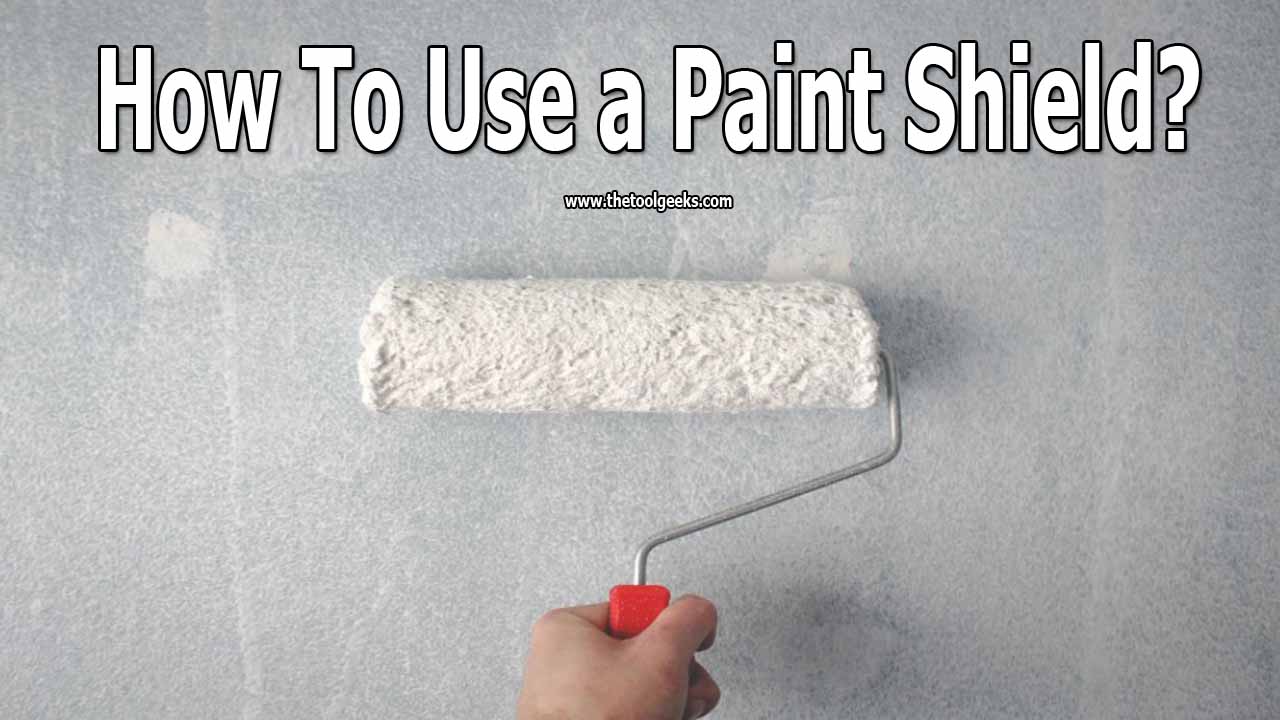How to Use a Paint Shield (4 Easy To Follow Tips)
TheToolGeeks.com is a participant in the Amazon Services LLC Associates Program and other affiliate advertising programs. We may earn from qualifying purchases. (Learn More).
Whether you are an amateur or an expert at painting, the tools you use can mean the difference between an uneven patchy job or a sharp clean finish. A paint shield can help you achieve the latter.
Follow this guide to learn everything you need to know about paint shielding, including what they are, which ones are right for you, and how to use them.
But first, let us start with the basics.
Jump To Page Contents:
What are Paint Shields?
A paint shield is often a neglected piece of tool that you use to help keep your paint where you want it to be. These devices are highly efficient at protecting your surfaces from getting covered in paint and reduces the amount of “Oh-no” moments.
They are either thin metal or plastic rectangles, some come with handles that can attach to an extension pole, while others have no handles at all.
They also go by other names, such as paint guards, trim guards, trim, or even spray shields, depending on the manufacturers.
Read More — Best Sprayer For CabinetsChoosing the Right Shield for the Job
These tools may be made of plastic, have an aluminum blade, they may even be long or short. They could even be the humble dustpan or putty knife from your toolkit. You can also fashion them from a piece of cardboard with a straight edge.
When considering the proper paint shield for your job, you need to consider the size of the work that you are doing. For instance, for smaller jobs, a putty knife or household dustpan can be effective for painting around your wall trim.
If the area of wall trim is longer, you can move the paint shield as you go. For larger jobs, such as painting the siding on your home, you may wish to consider using a larger paint shield. Of course, you can always pop down to your local hardware place and find a proper painting shield, which we recommend for a professional finish.
Read More — Best Paint Sprayers For DoorsHow to Use a Paint Shield
Paint shields are excellent tools for painting baseboards, trims, moldings, and dividers. Here are some handy tips on how to use a paint shield.
Shield Position
Make you to properly position your paint shield for the most accurate results. To do this you should first look around the project site and determine what areas need protection. i.e. Adjacent wall, bricks on your home, a ceiling, etc.
Secondly, when trying to protect an adjacent wall while also protecting the ceiling, you should position your paint shield along the wall and tilt it slightly so that the ceiling is also protected.
Read More — Best Paint Sprayers For DecksPress against Opposite Surface
Press on the surface adjacent to the area you are painting when using a paint shield. If you are painting a baseboard, for instance, press the paint shield against the floor or carpet when you are painting the bottom part of the baseboard trim.
When you are ready to move on to the top part of the baseboard, simply press the paint shield against the wall. This prevents your brush strokes from going on the floor or wall.
Wipe and Repeat
When using your paint shield, it is crucial to clean as you go. While working, keep an old cloth or paper towel nearby so that you can use it every step of the way.
The reason behind this is simple; when you press your paint shield against the surface and drag your brush to paint that edge or trim, you will likely have paint transfer onto your paint shield.
By the time you move your paint shield to the next area, and you are not careful, the paint transferring to the areas you wish to protect can occur. To prevent this from occurring, make sure to wipe your paint shield every time you move to the next area.
Read More — Gravity-Feed Spray Guns ReviewUsing Paint Shield in Wind
The same rules apply when you are painting window trims. Press the paint shield against the window case or glass when you are painting the window trims or dividers.
Place your paint shield parallel to the window divider or trim and bobs your uncle, you are away.
How To Spray Paint with a Painting Shield
Depending on the size area you plan on spraying, you may need additional assistance. Having a friend nearby to help take turns in holding the paint shield while the other paints can make light work of the job.
- Test drive – Take a bit of cardboard or anything you have laying around that you will not mind getting paint on and test run the spray paint while practicing holding the paint shield.
- Keep the spray gun at a minimum of 3 inches away from the paint shield to prevent unnecessary splash off.
- Keep your up and down movement parallel to the surface you are spray painting, be sure to move slowly and carefully as moving too quickly can ruin the overall look of the job.
- Continue to move paint shield, as necessary. Try not to spray too close to the edge of the paint shield or else you may accidentally spray paint the areas you want to protect.
The Bottom Line
While you do not necessarily have to purchase a professional paint shield, these shields are designed to help protect against paint transfer and are more efficient than a makeshift protector.
Given all the cost, time, and energy that goes into any painting project, you may as well splash out and buy yourself a traditional shield to use to ensure you end up with professional-looking results.
Remember, you can reuse a paint shield time and time again, so long as you care for it properly by always cleaning it during and after use. You cannot do this with cardboard.
Read More — How To Spray Paint Your BikeAmazon and the Amazon logo are trademarks of Amazon.com, Inc, or its affiliates.

